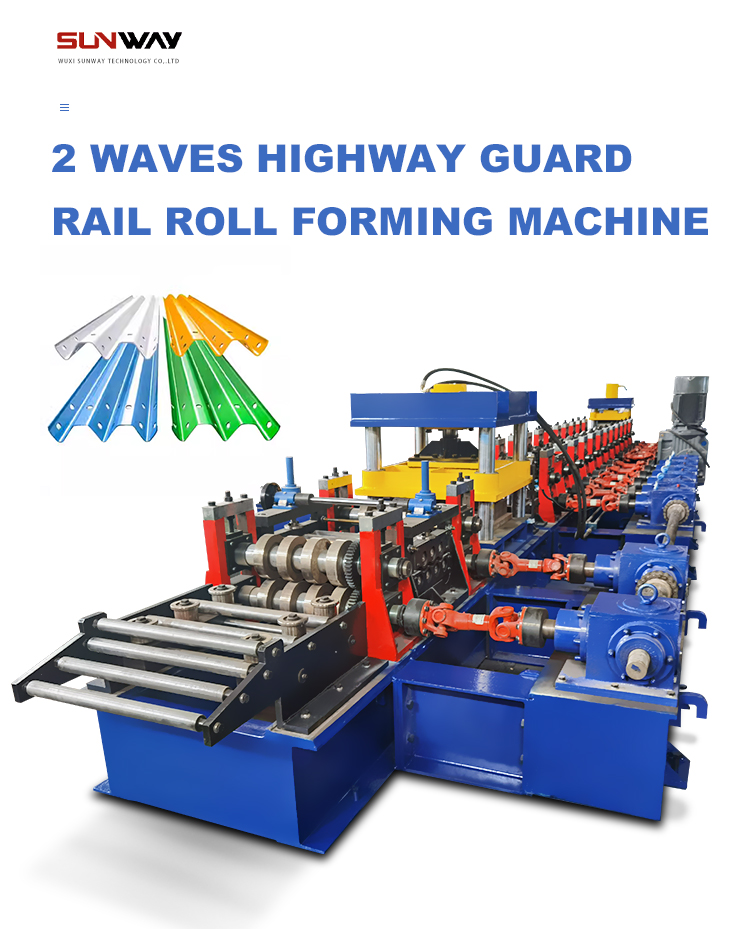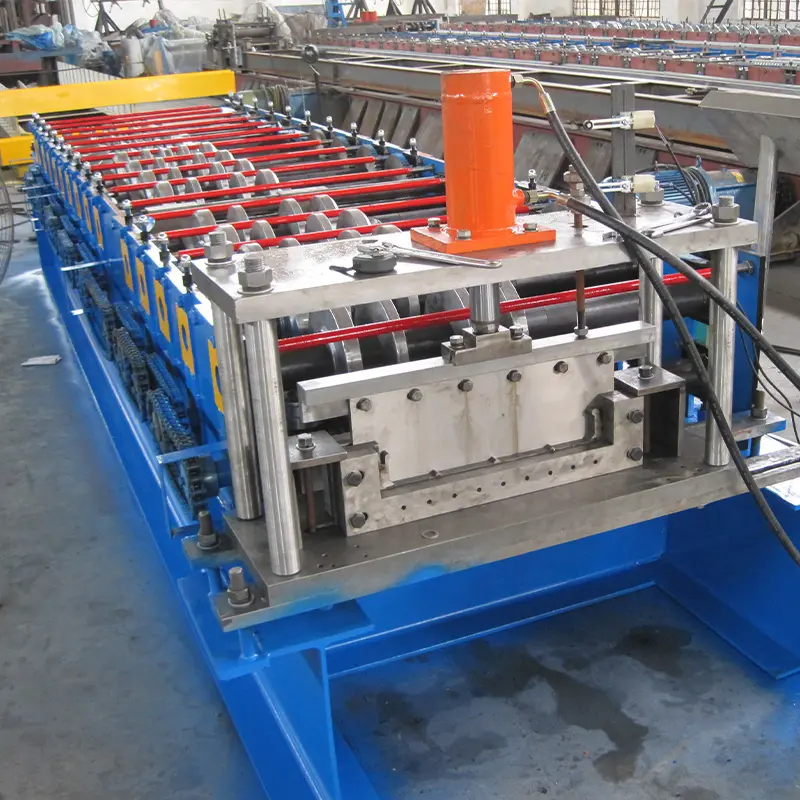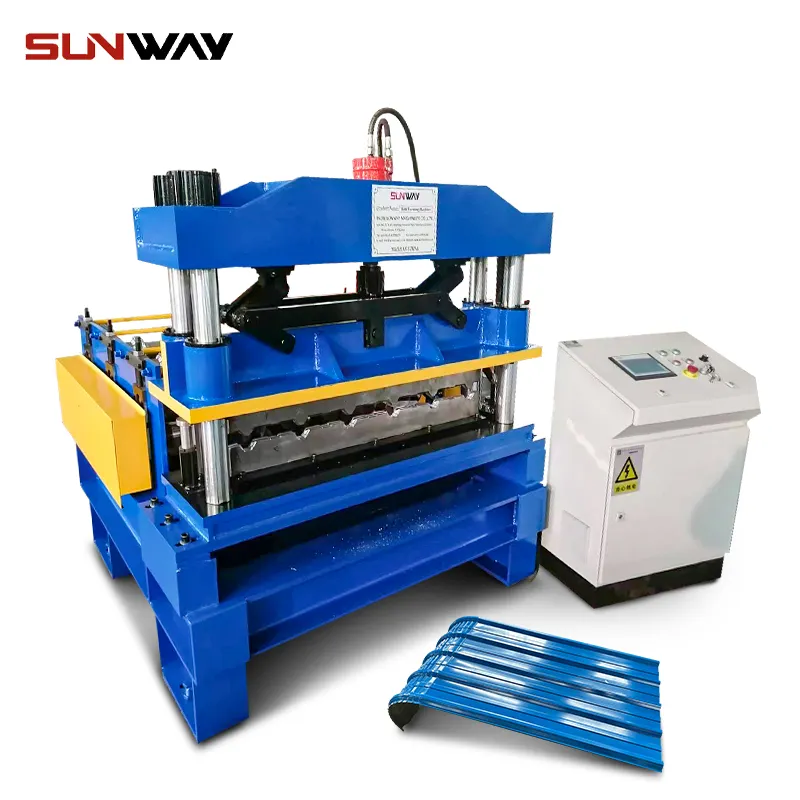Introduction
In the realm of modern construction, precision and efficiency play pivotal roles in creating durable and reliable structures. One often-overlooked component that plays a significant role in both residential and commercial construction is the metal door frame. metal door frame roll forming machine provide essential structural support, security, and aesthetic appeal to buildings. Behind the scenes, a remarkable technology known as roll forming has revolutionized the production of these frames, streamlining the manufacturing process and ensuring consistent quality.
The Importance of Metal Door Frames in Construction
Before delving into the technology that shapes metal door frames, let’s underscore their importance in the construction industry. Door frames are more than mere thresholds; they serve as the skeletal structure for doors, ensuring proper installation and alignment. Metal door frames, in particular, offer exceptional strength, fire resistance, and longevity compared to traditional wooden frames. Additionally, they contribute to the overall structural integrity of a building, enhancing its resilience against various stresses and strains.
Evolution of Roll Forming Technology
The evolution of roll forming technology has been a game-changer in the production of metal door frames. Traditional methods involved welding and manual shaping, which were time-consuming and often led to inconsistencies in the final product. Roll forming, on the other hand, allows for continuous and automated shaping of metal sheets into complex profiles. This technology has transformed the manufacturing landscape by increasing efficiency, reducing waste, and maintaining precise dimensions.

Understanding Roll Forming Machines
At the heart of this technological advancement lies the roll forming machine. This sophisticated piece of equipment transforms flat metal sheets into intricate profiles by passing them through a series of precisely contoured rollers. Each roller imparts a specific shape, gradually forming the desired cross-section of the door frame. The continuous nature of roll forming minimizes material waste and ensures uniformity in the final product.
The Working Principle of Metal Door Frame Roll Forming Machine
The roll forming process involves a step-by-step transformation of the metal sheet. As the sheet enters the machine, a series of rollers bend and shape it according to the predefined design. The sequence of rollers is meticulously calibrated to achieve the desired dimensions and features. The fully formed profile is then cut to the required length and moved along the production line for further processing.
Key Components of the Roll Forming Machine
A metal door frame roll forming machine consists of several integral components:
- Uncoiler: This device feeds the flat metal sheet into the machine.
- Rollers: The heart of the machine, these rollers shape the metal sheet.
- Transmission System: Transfers power to the rollers, enabling their movement.
- Cut-off System: Cuts the continuous profile into individual frame segments.
- Control System: Manages the entire process, ensuring precision and synchronization.
These components work in harmony to create accurate and consistent metal door frames.
Benefits of Using Metal Door Frame Roll Forming Machines
The adoption of metal door frame roll forming machines offers several compelling benefits to manufacturers and the construction industry:
- Precision and Consistency: Roll forming technology ensures uniform dimensions and profiles, reducing the need for manual adjustments and enhancing the overall quality of the frames.
- Efficiency and Speed: Automated roll forming significantly accelerates the production process, enabling manufacturers to meet tight project deadlines without compromising on quality.
- Material Savings: The precise nature of roll forming minimizes material waste, contributing to cost savings and a more sustainable manufacturing process.
- Design Flexibility: Roll forming machines can create a wide variety of intricate profiles, allowing for customization to meet diverse architectural requirements.
- Labor Reduction: Automation reduces the reliance on manual labor, leading to a more streamlined and cost-effective manufacturing operation.
- Durability: Metal door frames produced through roll forming are inherently durable and resistant to environmental factors, contributing to the longevity of the building.

Factors to Consider When Choosing a Roll Forming Machine
Selecting the right roll forming machine is a crucial decision that impacts the quality and efficiency of the manufacturing process. Consider these factors when making your choice:
- Material Compatibility: Ensure the machine is designed to work with the specific type of metal you intend to use.
- Design Complexity: Choose a machine that can accommodate the complexity of the profiles you need to produce.
- Production Volume: Determine whether the machine’s production capacity aligns with your manufacturing needs.
- Automation Level: Decide on the degree of automation required based on your available resources and workforce.
- Maintenance and Support: Opt for a machine from a reputable manufacturer that offers reliable maintenance and technical support.
Maintenance and Care of Metal Door Frame Roll Forming Machines
Regular maintenance is essential to ensure the longevity and optimal performance of your roll forming machine. This includes:
- Lubrication: Keep moving parts well-lubricated to reduce friction and prevent premature wear.
- Inspections: Regularly inspect the machine for signs of wear, misalignment, or damage.
- Cleaning: Remove debris and accumulated material from the machine’s components.
- Component Replacement: Replace worn-out or damaged parts promptly to avoid disruptions in production.
Common Issues and Troubleshooting
Roll forming machines can face certain challenges that might affect the production process. Some common issues include:
- Uneven profile dimensions
- Material wrinkling or deformation
- Inconsistent feeding
- Roller misalignment
Common Issues and Troubleshooting (Continued)
To address these issues, consider the following troubleshooting steps:
- Check Material Quality: Ensure the metal sheet used is of high quality and within the specified tolerances.
- Inspect Rollers: Regularly inspect and align the rollers to prevent profile inconsistencies.
- Feeding Mechanism: Verify that the uncoiler and feeding mechanisms are functioning smoothly and without jams.
- Lubrication: Adequate lubrication of moving parts prevents friction-related problems.
- Calibration: Recalibrate the machine if you notice deviations in profile dimensions.

Innovations in Metal Door Frame Manufacturing
Continuous advancements in roll forming technology are driving innovation in metal door frame manufacturing:
- Digital Modeling: Computer-aided design (CAD) and simulation tools enable precise design and testing before production begins.
- Smart Control Systems: Integration of IoT and AI enhances automation, quality control, and machine diagnostics.
- Quick Changeover: Modern machines allow rapid adjustments for producing different profiles, reducing downtime.
- Energy Efficiency: Energy-saving features contribute to a more sustainable manufacturing process.
Role of Metal Door Frame Roll Forming Machines in Green Construction
Roll forming machines align with the principles of green construction by promoting sustainability:
- Material Efficiency: Minimized waste through precision shaping reduces the environmental impact of manufacturing.
- Energy Savings: Advanced control systems optimize energy consumption, reducing the machine’s carbon footprint.
- Longevity and Durability: Roll-formed metal door frames contribute to the longevity of buildings, reducing the need for replacements.
Future Trends in Roll Forming Technology
The roll forming industry is poised for exciting developments:
- 3D Printing Integration: Combining 3D printing with roll forming could enable the creation of even more intricate profiles.
- Advanced Materials: Exploration of new materials like composites and alloys for enhanced performance and sustainability.
- Virtual Reality Training: VR simulations for machine operation and maintenance training.
Case Study: Successful Implementation of Roll Formed Metal Door Frames
In a recent construction project, XYZ Construction adopted roll-formed metal door frames. This decision led to:
- Efficiency: Reduced production time resulted in faster project completion.
- Cost Savings: Material efficiency and reduced labor costs led to substantial savings.
- Quality: Consistent profiles enhanced the overall quality of the building’s finishes.

Conclusion
The metal door frame roll forming machine has transformed the construction landscape, streamlining the manufacturing of crucial components. As technology continues to evolve, we can expect even more innovative solutions that enhance efficiency, quality, and sustainability in the construction industry.
FAQs
Are roll-formed metal door frames as strong as traditional welded frames?
Roll-formed frames are often stronger due to their uniformity and the inherent strength of the metal used.
Can roll forming machines create custom designs for unique architectural projects?
Yes, roll forming machines can be adjusted to produce a wide range of custom designs.
What maintenance is required for a roll forming machine?
Regular lubrication, inspections, and timely part replacements are key to maintaining a roll forming machine.
Are roll-formed door frames more expensive upfront?
While the initial investment might be higher, the long-term cost savings from efficiency and durability often outweigh the upfront costs.
Can roll forming machines be used for other applications besides door frames?
Yes, roll forming machines are versatile and can be used for various metal shaping applications beyond door frames.
